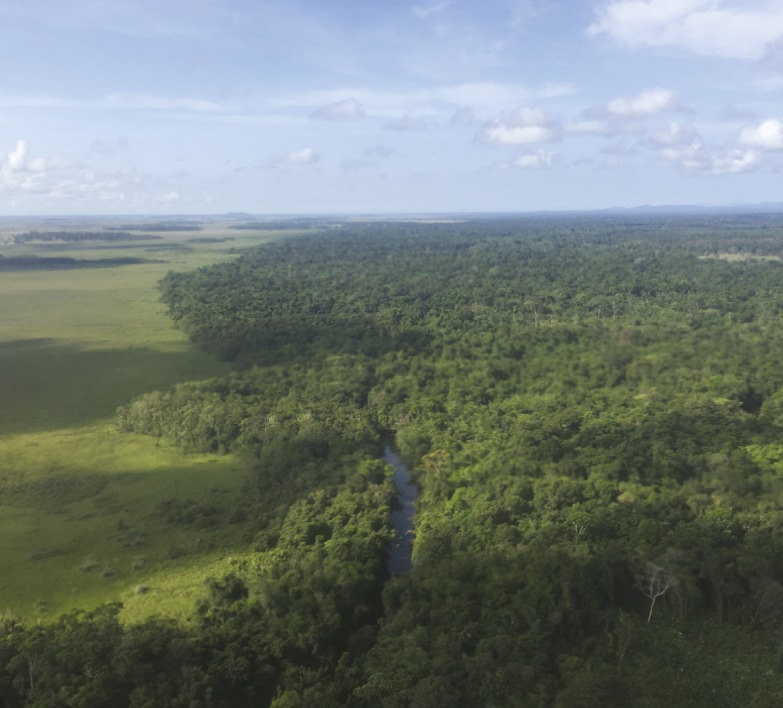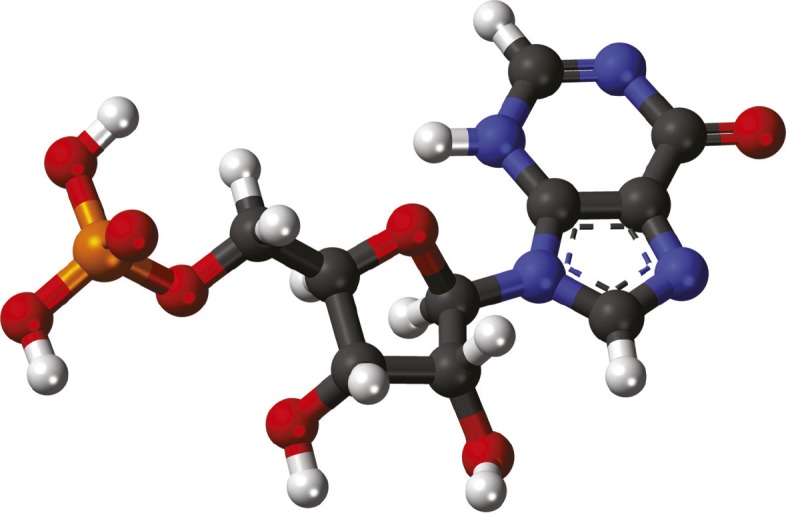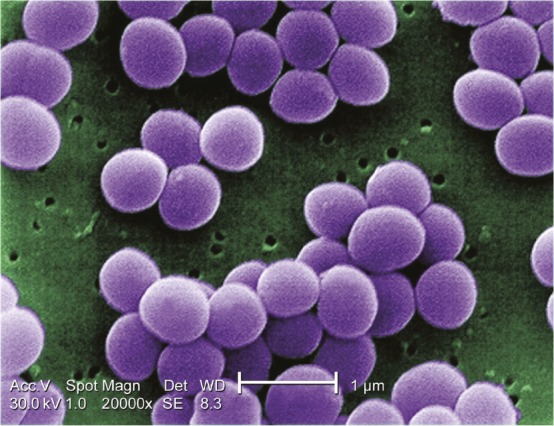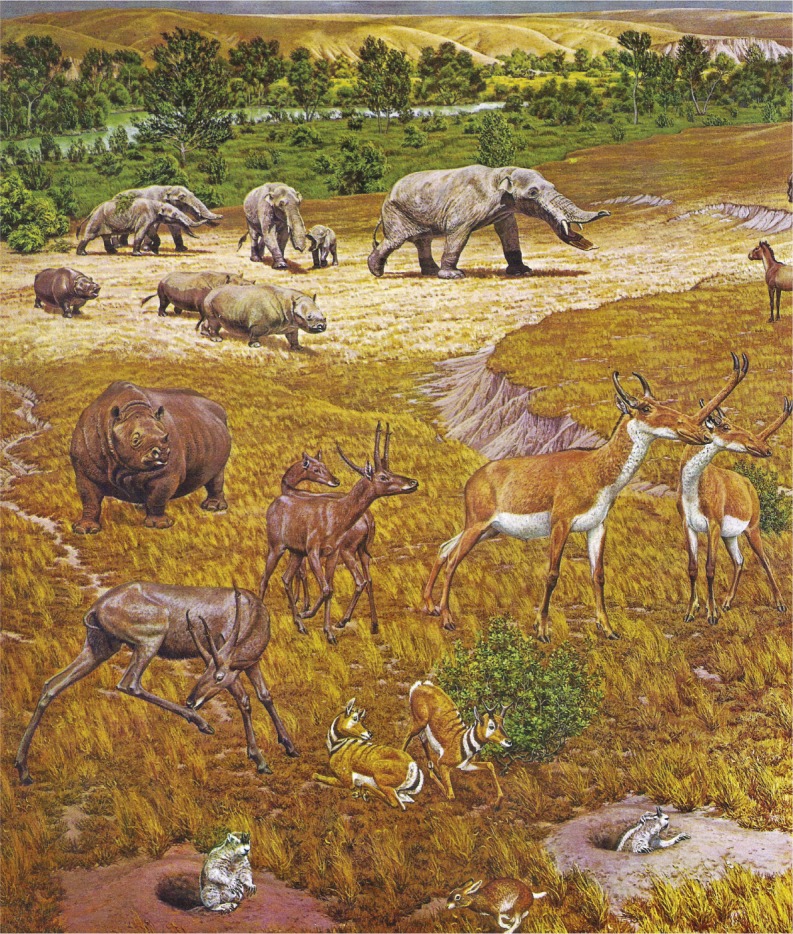Resource extraction, forest loss, and community rights

Deforestation in Honduras.
Amazonia, Indonesia, and Mesoamerica are home to much of the world’s remaining humid tropical forests. However, these regions also harbor mineral, oil, coal, and natural gas reserves, with planned projects for resource extraction and large-scale crop cultivation. In the Amazon basin, for example, 327 oil or gas blocks are under bidding, covering around 108 million hectares, and mining concessions cover an additional 160 million hectares. Anthony Bebbington, Denise Humphreys Bebbington, Laura Aileen Sauls, John Rogan, et al. (pp. 13164–13173) conducted a geospatial analysis of existing forest loss with areas of potential resource extraction, including mining and hydrocarbon concessions, throughout the remaining forests in the study area. The authors combined the analysis with qualitative data from interviews with key informants and stakeholders. The authors report that indirect impacts of resource extraction on forest loss exceed direct impacts, largely due to increased infrastructure investment tied to resource extraction, which exacerbates forest degradation. Furthermore, infrastructure enables the expansion of the agricultural frontier in forested areas, with the result that agricultural conversion largely drives forest loss. However, the authors note, previous studies suggest that direct control of resources by indigenous communities, as well as protected areas, can reduce deforestation and carbon emissions. According to the authors, protection of forests and rights of indigenous communities call for novel approaches that balance conservation and agroindustry goals, including rigorous land-use zoning and community-led resource management. — T.G.
Termite mounds as methane sinks
Termite breakdown of plant material is a component of carbon cycling in tropical ecosystems. Such decomposition also produces globally significant amounts of the greenhouse gas methane, but little is known about methane turnover within the large and intricate structures of termite mounds. Philipp Nauer et al. (pp. 13306–13311) quantified methane turnover in 29 mounds of three tropical termite species in northwest Australia. The authors used three independent methods to measure methane production, oxidation, and transport in the mounds in situ. Comparing methane injected into the mounds against a nonreactive tracer gas revealed that the mounds oxidize methane. Further measurements confirmed that the mounds emit methane into the atmosphere, but methanotrophic bacteria, living in either the mounds or the soil underneath, intercept, on average, half of the methane produced by termites. The authors note that methane turnover data can be used to determine termite biomass with minimal disturbance to the mounds. Further research is needed to determine temporal variations in methane turnover and oxidation in nests made of materials other than soil, but the findings suggest that in situ measurements can lead to precise estimates of termites’ contribution to the global methane emissions budget, according to the authors. — T.H.D.
Primordial RNA and origins of life

Inosine monophosphate, a possible component of primordial RNA. Image courtesy of Wikimedia Commons/Jynto.
RNA is believed to have played both genetic and catalytic roles early in the evolution of life, but the origins of RNA and its precursors remain uncertain. However, prebiotic synthesis of adenine and guanine, two of the canonical nucleobases that make up RNA, remains challenging. Seohyun Chris Kim et al. (pp. 13318–13323) tested whether the 8-oxo-purines, which could plausibly be synthesized prebiotically, and inosine could replace adenine or guanine in a functional RNA molecule. Activated 8-oxo-purine nucleotides were incorporated into a growing RNA strand at a much slower rate than the canonical nucleotides. Once incorporated, the 8-oxo-purines significantly slowed the incorporation of the next nucleotide. The presence of 8-oxo-purines in the template strand resulted in high copying error rates compared with the canonical nucleotides. By contrast, activated inosine nucleotides were incorporated at rates comparable to those of canonical nucleotides and exhibited specificity for forming base pairs with cytosine comparable to that of guanine. Incorporation of inosine into the strand had a minimal impact on the rate of incorporation of subsequent nucleotides. The results suggest that inosine could have substituted for guanine in an early version of RNA-based life, according to the authors. — B.D.
Lower respiratory tract infection diagnosis by next-generation sequencing

Staphylococcus aureus, a possible cause of LRTI. Image courtesy of the CDC/Janice Haney Carr.
Lower respiratory tract infections (LRTI) take a heavy worldwide toll. Limitations of existing microbiologic tests hinder early and accurate diagnosis, especially in intensive care units (ICU) where noninfectious respiratory syndromes with symptoms similar to LRTI are prevalent. To develop improved LRTI diagnostics, Charles Langelier, Katrina Kalantar, et al. (pp. E12353–E12362) performed metagenomic next-generation DNA and RNA sequencing on tracheal aspirate collected from 92 adults admitted to an ICU with acute respiratory failure. The authors developed models for distinguishing pathogen DNA and RNA from that of commensal airway bacteria based on results from 20 patients in whom LRTI status was established by both clinical and microbiological criteria; the models were more than 95% accurate when tested on an independent subset of 24 patients, and identified potential pathogens in patients with clinically identified infections but negative microbiologic tests. The authors further identified metrics of pathogen likelihood, lung microbiome diversity, and host gene expression that could accurately distinguish LRTI from non-LRTI patients. A combination of host and microbe metrics permitted LRTI to be ruled out in the uninfected ICU patients. The results suggest a possible method for improved LRTI diagnosis, according to the authors. — B.D.
Controlling circadian behavior in mice
The mammalian circadian clock is coordinated by the brain’s suprachiasmatic nucleus (SCN) and involves self-sustaining transcriptional–translational negative feedback loops (TTFLs) in which CLOCK and BMAL1 proteins drive expression of the negative regulator proteins Period and Cryptochrome (Cry). Globally deleting the genes for Cry1 and Cry2 disables the TTFL and disrupts circadian rhythms. Elizabeth Maywood et al. (pp. E12388–E12397) developed a translational switch based on genetic code expansion (GCE) that involved incorporating a noncanonical amino acid (ncAA) into Cry1, resulting in Cry1 translation and ncAA-dependent expression. The authors found that ncAA-dependent activation of Cry1 translation in neurons of arrhythmic Cry-deficient SCN slices reversibly and dose-dependently initiated TTFL molecular rhythms. Using the ncAA to activate Cry1 translation in SCN neurons of arrhythmic Cry1- and Cry2-null mice rapidly and reversibly initiated circadian behavior, and the amplitude of the circadian rhythm was dependent on the number of transduced SCN neurons. The results indicate that expression of Cry1 in SCN neurons is sufficient to initiate and sustain TTFLs and circadian timekeeping. The authors suggest that GCE-based translational switching might be used to reversibly control diverse mammalian behaviors. — S.R.
Past analogs of projected future climates

Artistic rendering of North American Pliocene fauna. Image courtesy of Wikimedia Commons/Jay Matternes.
Climates from Earth’s deep past may provide analogs for possible near-future climates, but past and projected future climates have not been quantitatively compared. K. Burke, J. Williams, et al. (pp. 13288–13293) compared mean summer and winter temperatures and precipitation projected for 2020–2280 CE to those from two historic and four prehistoric warm periods spanning the last 50 million years. The authors found that Mid-Pliocene climates, 3.3–3 million years ago, replaced historical precedents as the best analog for future climates after 2030 CE. Under a scenario in which greenhouse gas emissions stabilize by the mid-21st century, Earth’s projected climate stabilized at Pliocene-like conditions. Under an unmitigated emissions scenario, global climates began to resemble those of the Early Eocene, 50 million years ago, by 2150 CE. In the latter scenario, up to 9% of projected climates had no close analog among any of the past climates examined. Both Pliocene-like and Eocene-like climates emerged initially in the continental interiors and subsequently spread outward. Hence, the results suggest that unmitigated greenhouse gas emissions may result in the reversal of a 50-million-year cooling trend in two centuries, according to the authors. — B.D.


